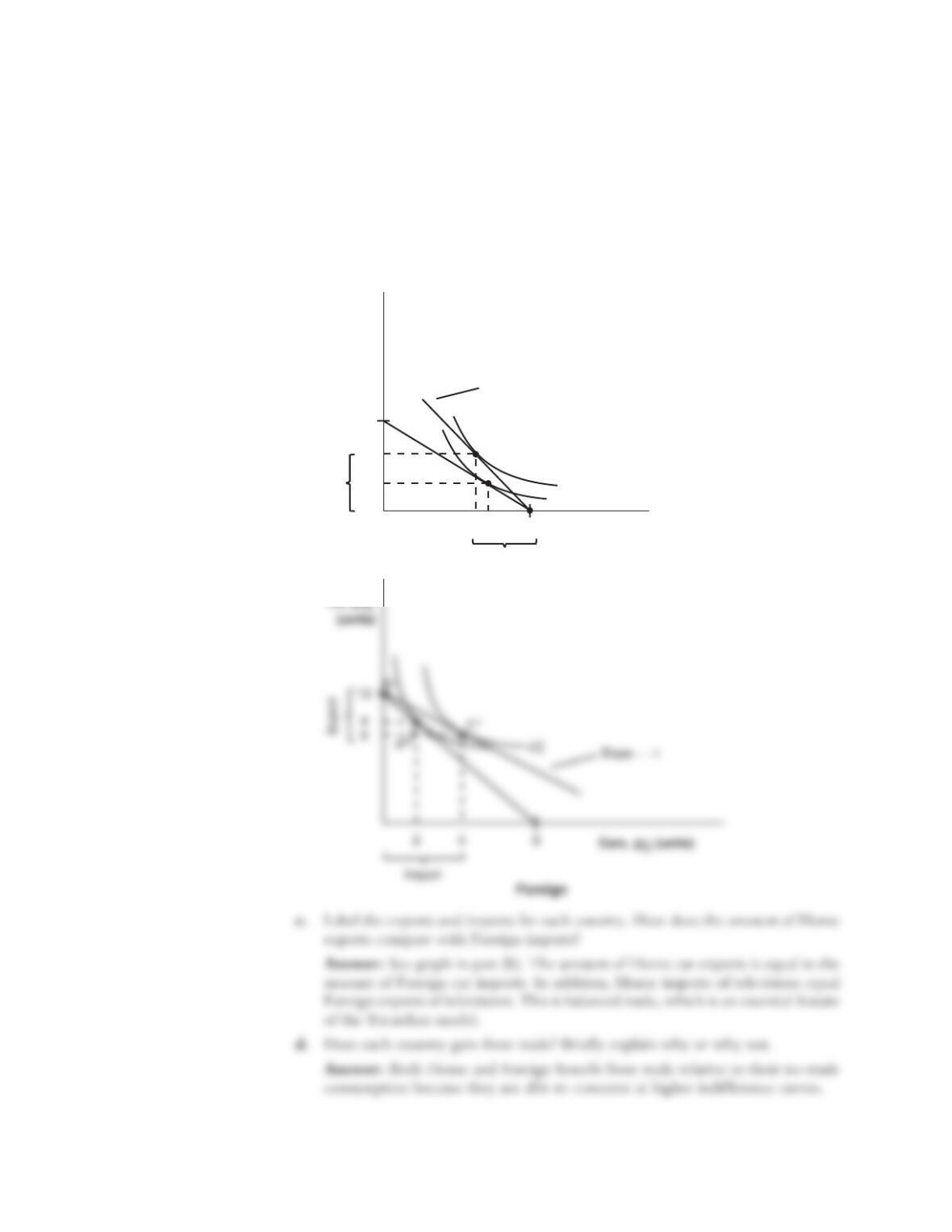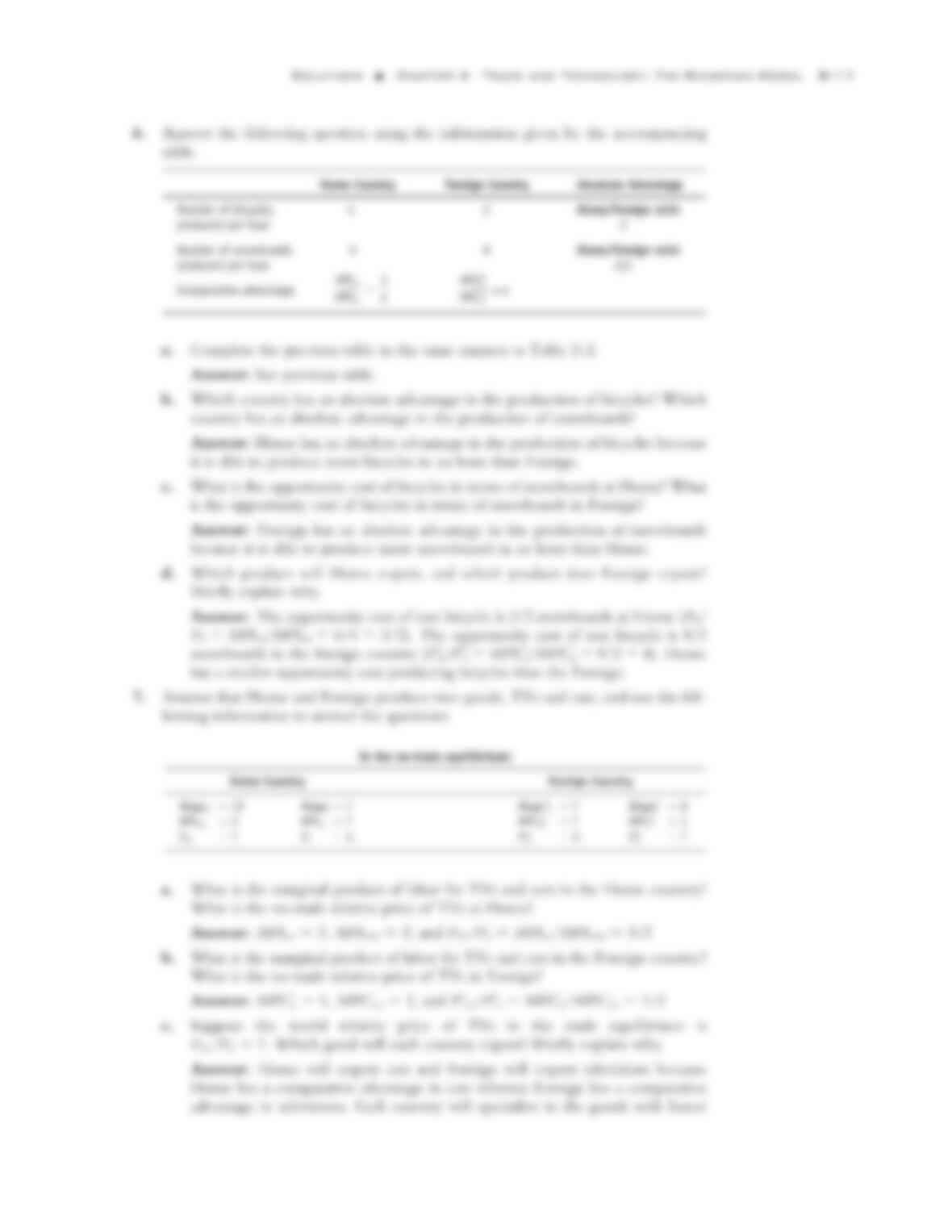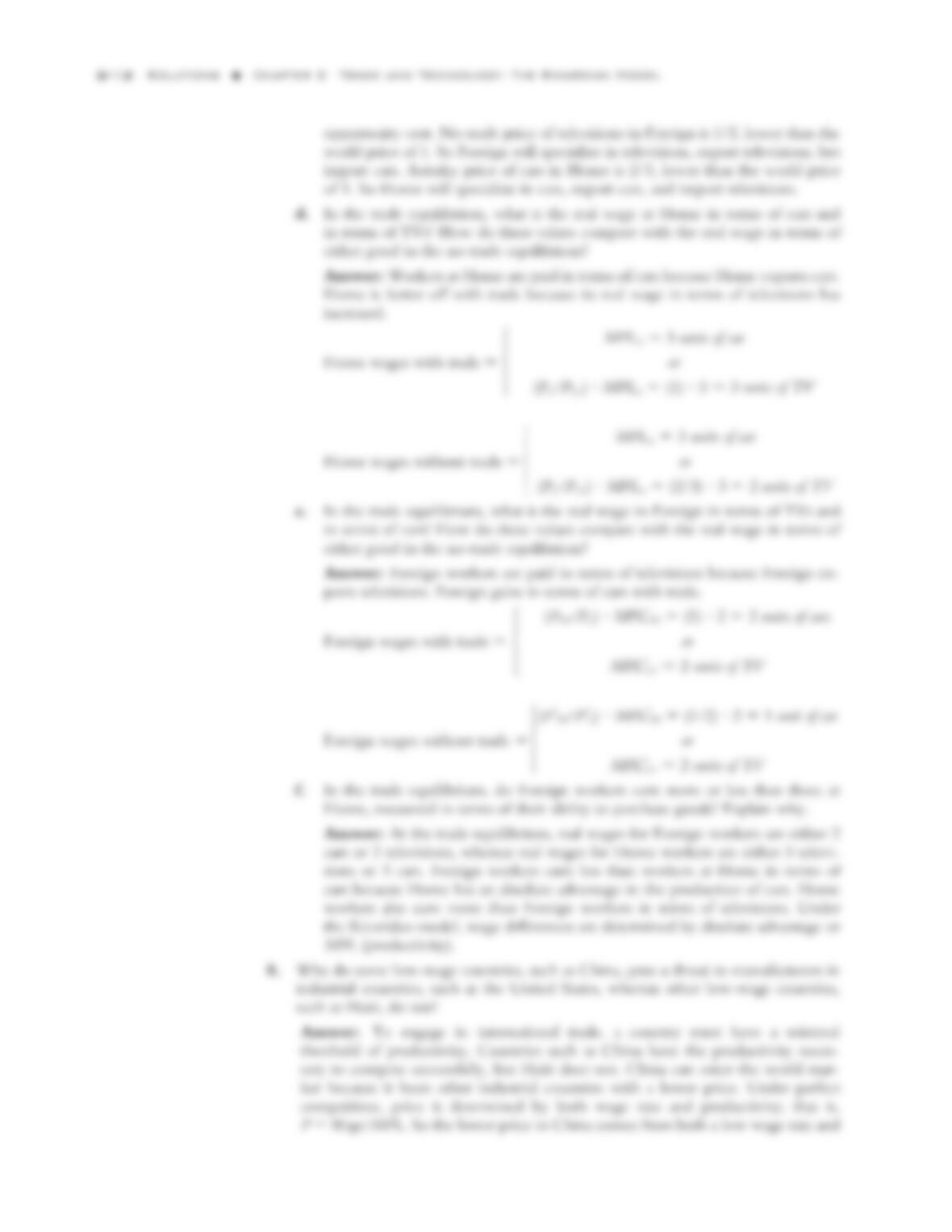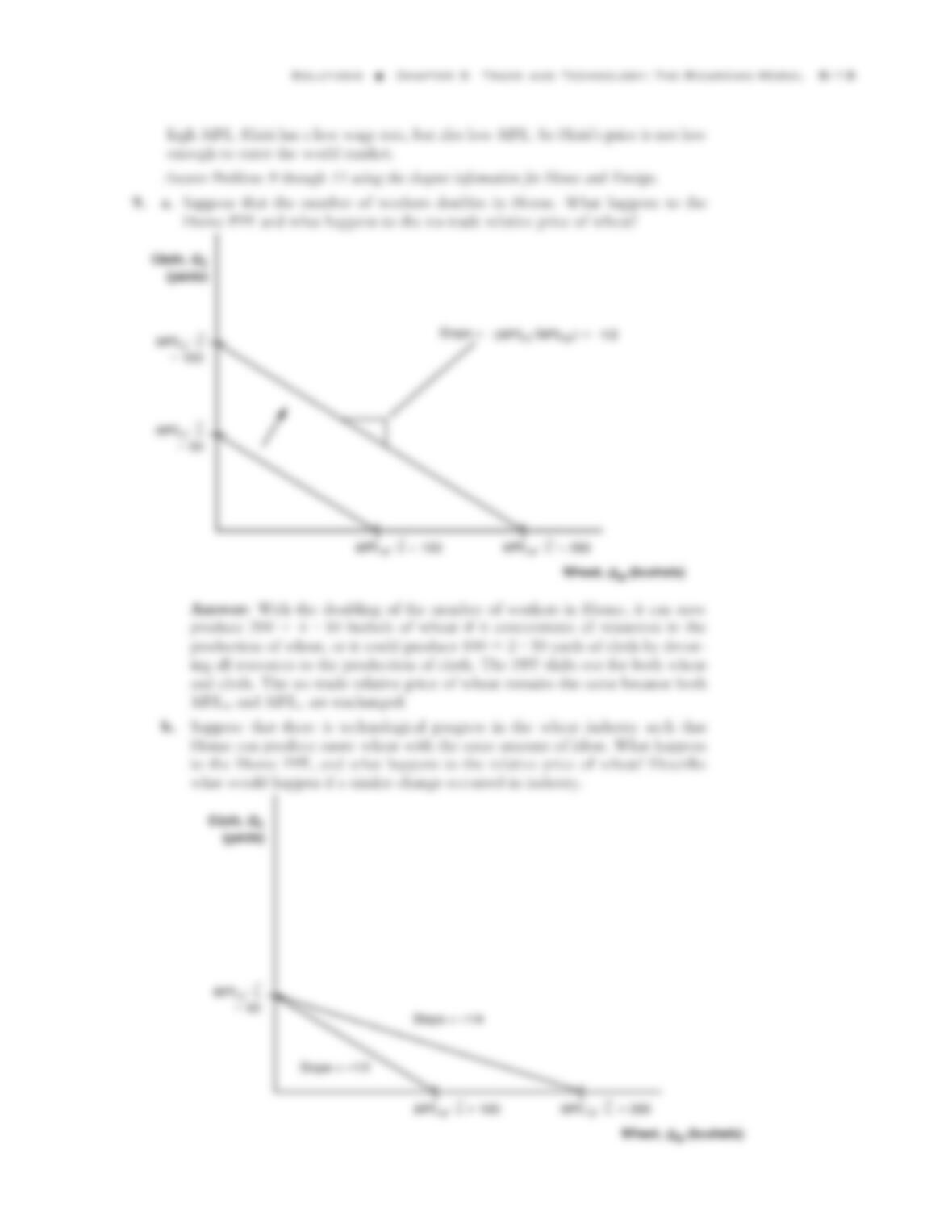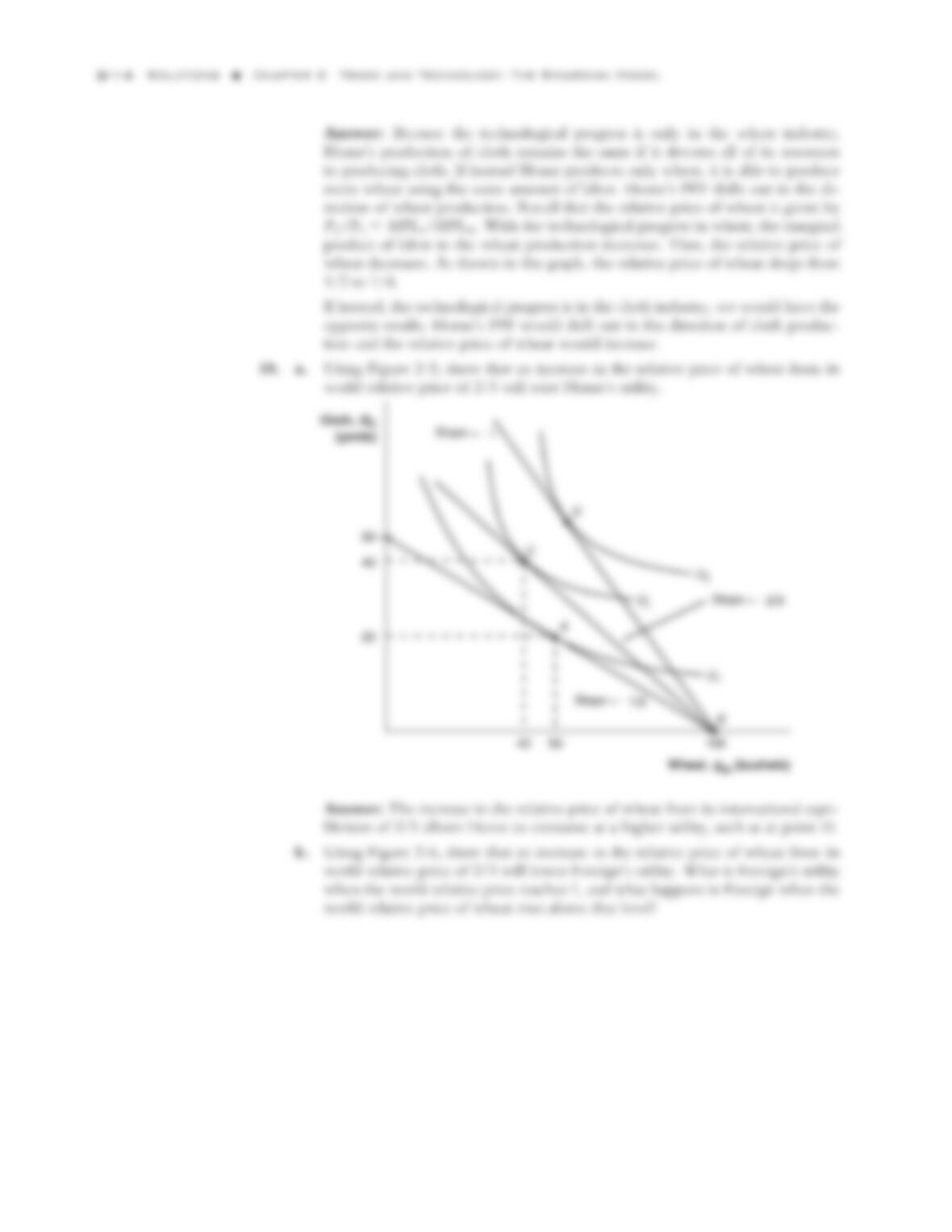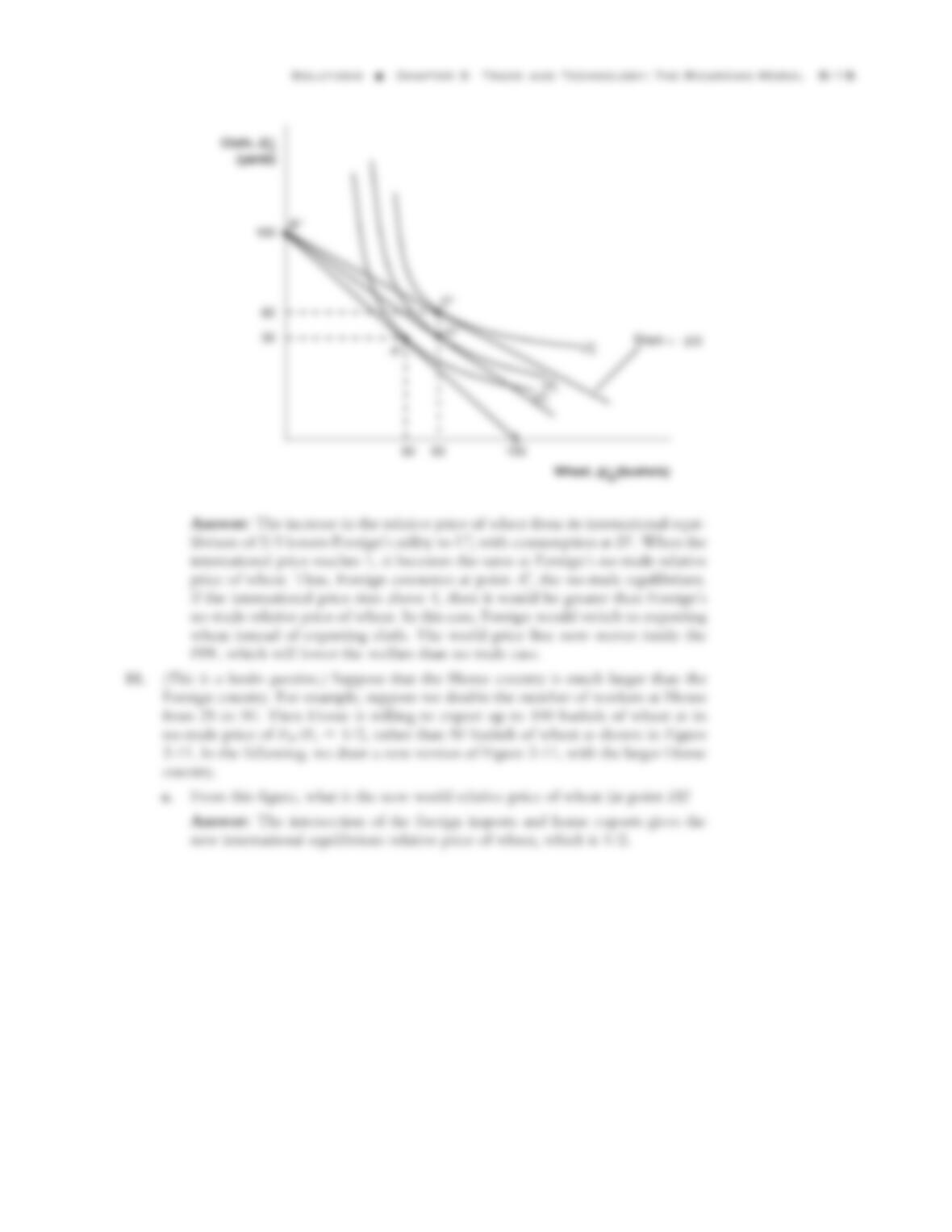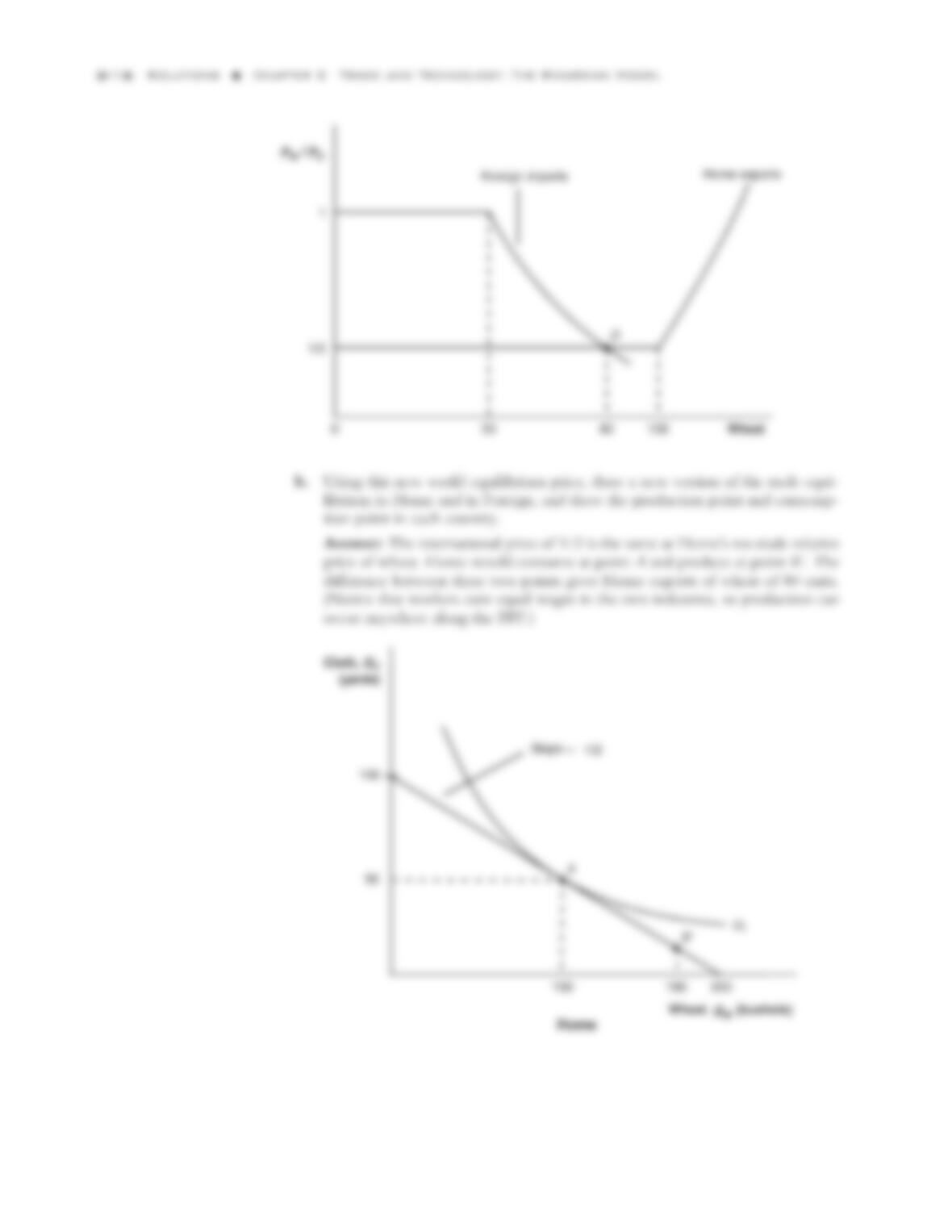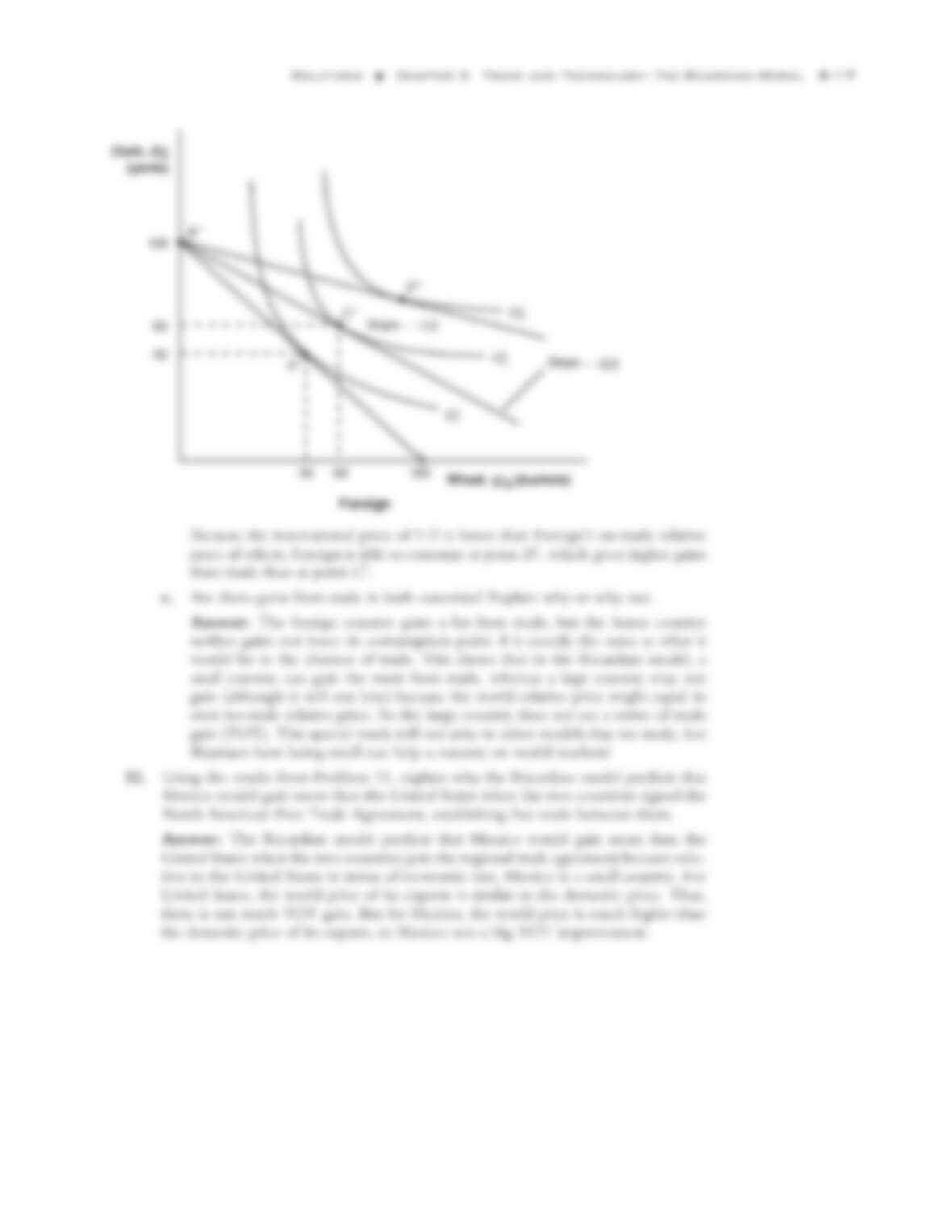Trade and Technology:
The Ricardian Model
1. At the beginning of the chapter there is a brief quotation from David Ricardo; here
is a longer version of what Ricardo wrote:
England may be so circumstanced, that to produce the cloth may require the labour of
100 men for one year; and if she attempted to make the wine, it might require the labour
of 120 men for the same time. . . .To produce the wine in Portugal, might require only the
labour of 80 men for one year, and to produce the cloth in the same country, might require
the labour of 90 men for the same time. It would therefore be advantageous for her to export
wine in exchange for cloth. This exchange might even take place, notwithstanding that the
commodity imported by Portugal could be produced there with less labour than in England.
Suppose that the amount of labor he describes can produce 1,000 yards of cloth or
1,000 bottles of wine in either country. Then answer the following:
a. What is England’s marginal product of labor in cloth and in wine, and what is
Portugal’s marginal product of labor in cloth and in wine? Which country has
absolute advantage in cloth and in wine, and why?
Answer: In England, 100 men produce 1,000 yards of cloth, so MPLC
5
1,000/100 5 10. 120 men produce 1,000 bottles of wine, so MPLW
5
1,000/120 5 8.3. In Portugal, 90 men produce 1,000 yards of cloth, so
MPL*
C
5 1,000/90 5 11.1. 80 men produce 1,000 bottles of wine, so
MPL*
W
5 1,000/80 5 12.5. So Portugal has an absolute advantage in both cloth
and wine, because it has higher marginal products of labor in both industries
than does England.
b. Use the formula PW/PC
5 MPLC/MPLW to compute the no-trade relative price
of wine in each country. Which country has comparative advantage in wine, and
why?
Answer: For England, PW/PC
5 MPLC/MPLW
5 10/8.3 5 1.2, which is the
no-trade relative price of wine (equal to the opportunity cost of producing
wine). So the opportunity cost of wine in terms of cloth is 1.2, meaning that to
S-7
2
